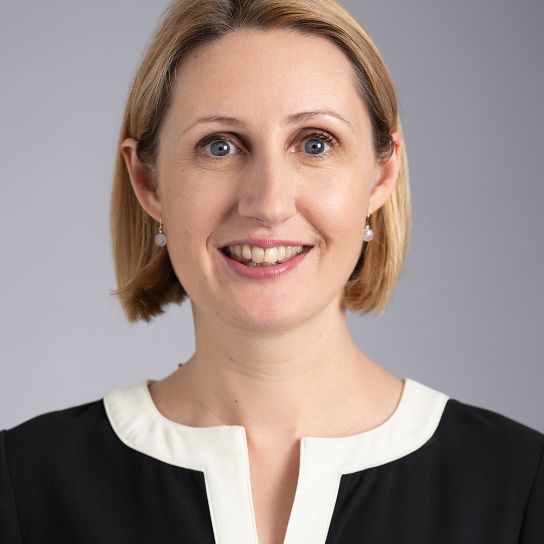On 23 March 2017, the Monetary Authority of Singapore (MAS) released a consultation paper on the proposed framework for Singapore Variable Capital Companies (S-VACC), which is a new type of legal entity to structure investment funds in Singapore.
This is the first time that Singapore has made available a flexible corporate vehicle designed specifically with investment funds in mind. Similar developments have also been seen in Hong Kong with the Financial Services and Treasury Bureau's recent consultation on a new open-ended fund company vehicle (OFC), which offers a more flexible and industry focussed approach to the structuring of investment funds (please see our briefing dated 18 March 2016 which can be found here).
The S-VACC has been designed to further develop Singapore as a centre for both fund management activities and investment fund domiciliation, providing collective investment schemes (CIS) with an additional option to the unit trust structure. The MAS also intends to allow the segregation of assets and liabilities of sub-funds established under a single legal entity.
Written comments to the consultation are due by 24 April 2017.
Proposed new framework
The proposed framework takes into consideration the laws and practices in other leading fund jurisdictions including Ireland and the United Kingdom. The existing investment fund regulatory regime will continue to apply in Singapore and the proposed S-VACC legislation will not replace or amend existing laws. In developing the framework, the MAS also considered international standards, as well as the interests of investors, fund managers and other fund service providers.
A summary of the features of the proposed framework for S-VACCs is as follows:
- Incorporation of S-VACCs will be governed by a new S-VACC Act to be administered by the Accounting and Corporate Regulatory Authority (ACRA). The proposed draft S-VACC Act is set out in Annex B of the consultation paper;
- The S-VACC structure can only be used as a vehicle for CIS, and not for operating any other business. While there is potential for S-VACCs to be used for other specialised purposes in the future, the current objective of the S-VACC framework is to create an alternative corporate structure to facilitate the incorporation of funds in Singapore;
- Both open-ended and closed-end funds can adopt the S-VACC structure. To ensure that investors of a S-VACC are clear on their rights of redemption, the MAS proposes to require the rights of and limits to redemption to be clearly set out in the constitution of the S-VACC;
- Sub-funds with segregated assets and liabilities can be created by registration with ACRA;
- Redemption of shares and capital reduction will be allowed, provided shares are issued and redeemed at their net asset value (NAV) (except for shares of closed-end funds listed on a securities exchange which will be issued and redeemed in accordance with applicable listing requirements);
- Payment of dividends out of capital is allowed in accordance with the provisions of its constitution.
- Annual general meetings may be dispensed with at the discretion of directors, subject to certain safeguards. For example, shareholder(s) with 10% or more of the total voting rights may require an AGM by giving 14 days' notice to the S-VACC before the date by which an AGM would have been required to be held;
- All S-VACCs must appoint an accounting entity to audit their accounts on an annual basis. However, in line with the fund industry norms, the MAS has proposed to not require S-VACCs to have an audit committee;
- A S-VACC will not be required to disclose its register of shareholders to the public, but must make the register available to supervisory and law enforcement agencies where necessary;
- Directors will be required to be fit and proper persons. At least one director must be a director of the S-VACC's fund manager. For authorised “retail” schemes, a S-VACC must have at least three directors, of which at least one director has to be independent of: (i) business relationships with the S-VACC; (ii) the fund manager of the S-VACC (and its related entities); and (iii) all substantial shareholders of the S-VACC;
- A S-VACC must have its registered office in Singapore and appoint a Singapore-based company secretary. At least one of the S-VACC's directors must be resident in Singapore;
- A S-VACC's assets must be managed by a permissible fund manager comprising Singapore licensed or regulated fund managers;
- Requirements in relation to AML/CFT will be imposed on a S-VACC. The S-VACC will be required to outsource the performance of AML/CFT duties to its fund manager and the S-VACC will be held ultimately responsible for compliance with its AML/CFT requirements; and
- A S-VACC consisting of an authorised “retail” scheme or restricted scheme (relying on the accredited investor offering exemption) must appoint an approved custodian that will take custody of the scheme's assets and act in the best interests of its shareholders.
The new framework will provide investment managers greater operational flexibility in Singapore, and allow CIS to consolidate the fund domicile with the respective fund management activities. The S-VACC structure will also act as a platform for fund managers to anchor their substantive operations in Singapore, where control and management will be executed from Singapore. The MAS is also studying the tax regime for S-VACCs, including exploring the feasibility of extending the current fund vehicle tax schemes to S-VACCs, and welcomes feedback on the S-VACC tax regime.
Way forward
The consultation paper contains 24 questions which can be found at Annex A. The deadline for providing written comments is 24 April 2017, following which MAS will publish its response to the feedback received
Key contacts
Legal Notice
The contents of this publication are for reference purposes only and may not be current as at the date of accessing this publication. They do not constitute legal advice and should not be relied upon as such. Specific legal advice about your specific circumstances should always be sought separately before taking any action based on this publication.
© Herbert Smith Freehills 2024

